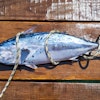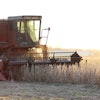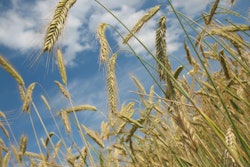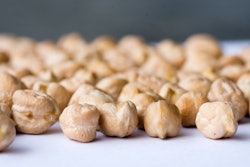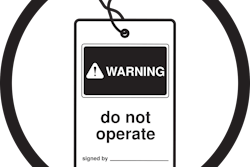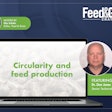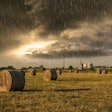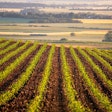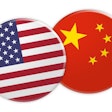Transcription of Feed & Grain Chat with Jake Joraanstad, CEO of Bushel
Elise Schafer, editor of Feed & Grain:Hi, everyone, and welcome toFeed & Grain Chat. I'm your host Elise Schafer, editor ofFeed & Grain. This edition of Feed & Grain Chat is brought to you byWATT Global Mediaand Feedandgrain.com.Feedandgrain.comis your source for the latestnews,product and equipmentinformation for the grain handling and feed manufacturing industries.
Today I'm joined on Zoom by Jake Joraanstad, CEO of Bushel. He's here today to discuss the trends and technology impacting grain handlers across North America. Hi, Jake, how are you?
Jake Joraanstad, CEO of Bushel:Doing well, calling in from Fargo this morning. Thanks for having me!
Schafer:Well, thank you for coming on! Let's get right into it. How has agtech impacted the grain handling industry over the last decade, and what do you think has been the most significant?
Joraanstad:Yeah, so if you think about the last 10 years in this space, and you can call it Agtech, but you can also just say technology, generally things like software and even robotics and capabilities like that. It's interesting, because so much of the first part of those 10 years was spent trying to work directly to bring something to the farm or to sell something to the farmer.
但是我认为,最近,我们见过很多vement towards helping the supply chain in that arena. Whether it's a grain company or a feed operation, there's a lot more happening there than maybe there was in the early days. And if you think about whether it's the contracting process, simply put — very much a paper-based solution in a lot of places, even still today, where you may be getting 60% of your contracts signed, even though we're operating as if all grain contracts are good-to-go because we agreed on the phone to things like E-sign, making that a 90%-plus completion process just because it's more convenient. That was a big jump forward when companies got comfortable with it. I remember having to call the state of Illinois and the state of Iowa to confirm that we can actually do E-sign in an app or on a web tool, and it will count as a grain contract. There was a lot of skepticism to that in the early days. That's a big movement forward.
And I think even more recently, you're starting to see things like the farmers self-service. The reason we started Bushel was this idea that we're gathering paper tickets and contracts or gathering up printing settlements and statements versus being able to self-serve them like we do our bank accounts today online or in our app. That was where we thought there was a lot of need. And now we're seeing a lot of great adoption there. The farmer especially is ready for more convenient self-service.
Generally speaking, I think everybody still has this mindset in the industry that farmers are not interested in technology or they're not going to use the tool. We can definitively say that that is not the case anymore. Whether it's a 65-year-old farmer or a 30-year-old farmer, they're adopting these tools, they're signing their contracts, they're submitting grain offers through their mobile offerings. They're on their phone. That mobile phone is where they're doing business. It's just normal now. And almost everybody has a smartphone, and even those holdouts that say, 'Oh, I don't need a smartphone,' they've got an iPad. And so we're way past that.
The adoption level of farmers using technology from their grain companies, for example, is off the charts. Some of our customers are seeing over 90% of their farms they do business with on any given year, using the digital tools. I mean, that's progress, and I think we can stop talking about the idea that that's part of the issue, and now more focus on what are the problems we can help solve, knowing farmers are already in a position to use these tools.
Schafer:Now, what trends in grain handling have you seen emerge as a result of labor shortages?
Joraanstad: Particularly, with 2020 kicking off this idea that, 'Wow, we have a real shortage of labor,' which I think everybody knew, but it became much more of an issue. After that, when everybody's talking about what does it look like to do a lights-out facility that can take grain 24/7? How do you solve for coming into the facility, making sure you're dumping in the right locations? There's a lot of effort there.
One of the earliest things that happened was [people said] 'Hey, we don't have people in the office to be able to do the contract printing, can you just do it at home on your phone or online with E-sign?' Right now that's an example. And the other challenge is the idea on the farm, or, or the service-oriented parties that are coming out to the farm on behalf of, say a retailer, trying to automate more of the machine capability because we have less people being able to do this, we have more acres that we're growing, and there's an interesting challenge there.
Some people are building major autonomous tractors, there's fleets of small robots being designed and these ideas are blending in between, but probably the biggest pressure of all is in the trucking space. In the last few years, the movements of, whether it's the grain and feed or it's on the retail side with inputs, has been one of the biggest challenges that basically the trucker and the carrier have been in the driver's seat for a while, and so there's a lot of discussion around how do we do better there. It's pretty inefficient and an old-school way of doing things still, and there's some cool companies likeRoger Thatand some others that are working on that arena that I think are making good progress in digital adoption and make it easier to do the job.
Schafer:So, what present grain industry challenge do you think will drive the next big tech innovation for handlers?
Joraanstad:So, on the handling side there's still this very up-in-the-air question of — the word traceability is almost a swear word — and it kind of should be in grain because we have a ton of corn coming in to a single facility, truck after truck; 1,000 bushel after 1,000 bushel, but the idea of, if you want to run some sort of sustainability program, or you're running an IP soybean program, the idea of connecting that ticket back to the field that it came from and in between, the storage it went to, is still an interesting challenge. And if we want to solve for automated dumping, if we want to solve for on-farm understanding of how a crop was grown for a particular type of program, you have to have pieces in place there at some point, and I think there's still a big challenge.
Name somebody who's doing real traceability from a field to a facility. It doesn't really exist. It's a fancy idea — a fanciful idea, I would argue — that may not be realistic, but there are some ways to think about this load into this storage facility on farm onto a truck and into a grain company, for example, that is doable. To figure out, at least in bulk, how those programs could be ran. And so that's an area Bushel spent some time on between our tool called Bushel Farm and so many other things that we do with our grain companies that we work with. So, lots of work to be done, but the idea that a farmer should be able to self service and apply a ticket to a contract or a delivery to a particular program, that seems like a no-brainer that at some point we have to get to, and I think nobody's really solved that yet.
Schafer:Absolutely. Well, Jake, thank you so much for your insights today!
Joraanstad:Thanks for having me on, and always up for it.
Schafer:That's all for today's Feed & Grain Chat. If you'd like to see more videos like this, subscribe to ourYouTubechannel,报名参加行业日常eNewsletter观看, or go to feedandgrain.com andsearch for videos. Thank you again for joining, and we hope to see you next time!
Grain supply chain management is dramatically changing, thanks to tech-based conveniences, like mobile smartphones, widespread internet connectivity and the adoption of e-signatures. In thisFeed & Grain Chat,Bushel's CEO Jake Joraanstad discusses how far grain producers and handlers have come with digital grain contracts and increased productivity through automation, as well as addressing the challenge of end-to-end food supply chain traceability.




